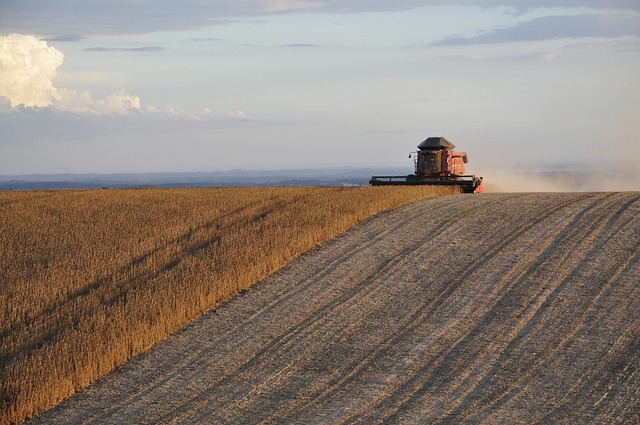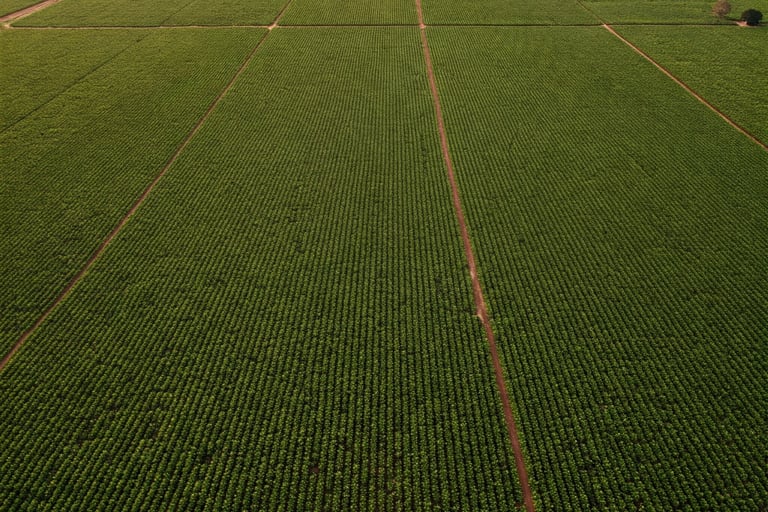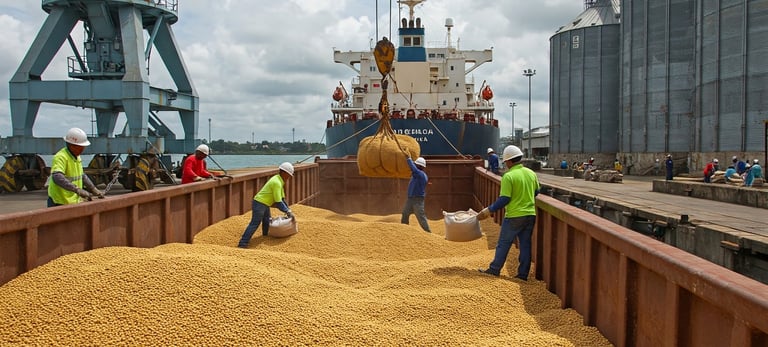Brazil Reaps Golden Harvest: Soybean Export Boom Fueled by Global Demand and Geopolitics
Brazil Reaps Golden Harvest: Soybean Export Boom Fueled by Global Demand and Geopolitics.Brazilian agribusiness, the vibrant engine of the national economy, has just achieved another historic milestone. In the early months of 2025, the country witnessed an explosion in soybean exports, solidifying its position as a global giant in the agricultural commodities market.
NEWS
Everton Faustino
5/2/20254 min read


The significant increase is not merely coincidental but rather the result of a convergence of factors ranging from growing global food demand to the complex mechanisms of international geopolitics, particularly the persistent trade barrier war between China and the United States.
The strength of Brazil's soybean sector lies in its colossal production capacity. It is estimated that, on average, Brazil can process and make available for export an impressive millions of tons of soybeans daily during peak harvest periods. This productive machinery, which involves everything from planting on vast tracts of land to the complex logistics of transportation and shipping, demonstrates the resilience and efficiency of the national agribusiness.


Frontiers of Prosperity: Regions Driving Exports
The expansion of the agricultural frontier and investments in technology and infrastructure have distributed export capacity across various regions of Brazil. However, some stand out for their significant contribution:
Mato Grosso: The undisputed leader in soybean production, this central-western state boasts vast arable land and constantly improving logistical infrastructure, boosting its export volumes.
Paraná: A traditional grain producer, this southern state maintains a strong share in the export market, benefiting from its strategic location and efficient ports.
Rio Grande do Sul: Despite facing climatic challenges in some harvests, this southern state has a well-established production chain and contributes significantly to the total exported volume.
Goiás: With the expansion of agriculture in the Cerrado biome, Goiás has gained prominence in the soybean production and export scenario.
Bahia and Maranhão (MATOPIBA Region): Brazil's new agricultural frontier, driven by investments in infrastructure and technology, shows remarkable growth in production and, consequently, in soybean exports.
The Lucrative Side Effect: The Sino-American Trade War as a Catalyst
Amidst geopolitical tensions and fierce trade disputes, the prolonged trade barrier war between China and the United States has unexpectedly emerged as a catalyst for Brazilian soybean exports. The imposition of high tariffs on American soybeans by China, in retaliation for Washington's protectionist measures, opened an unprecedented window of opportunity for Brazil.
China, the world's largest importer of soybeans, found itself compelled to seek alternatives to supply its voracious demand for this essential commodity for animal feed and oil production. Brazil, with its vast production capacity and relatively competitive costs, emerged as the primary beneficiary of this trade dispute.
The imposition of tariffs made American soybeans more expensive for Chinese buyers, giving the Brazilian product a significant price advantage. This competitiveness boosted Chinese purchases of Brazilian soybeans to record levels, filling the gap left by the reduction in American imports.
In addition to the price factor, confidence in the continuous supply capacity and the quality of Brazilian soybeans also contributed to the increase in Chinese demand. Brazilian agribusiness demonstrated resilience and the ability to meet the demands of the international market, strengthening trade ties with China.


Brazilian soybeans being loaded onto a cargo ship
Other Favorable Winds: Global Demand and Climatic Conditions
While the Sino-American trade war played a crucial role, other factors also contributed to the success of Brazilian soybean exports:
Growing Global Demand: The increasing global population and rising meat consumption in developing countries drive the demand for soybeans, used in animal feed production.
Favorable Climatic Conditions: In some producing regions of Brazil, ideal weather conditions during the growing cycle contributed to abundant and high-quality harvests, increasing the availability of soybeans for export.
Investments in Logistics: Continuous investments in port, road, and rail infrastructure, although still facing challenges, have facilitated the flow of production and reduced transportation costs, making Brazilian soybeans more competitive in the international market.
Favorable Exchange Rate: The devaluation of the Brazilian real against the US dollar also makes Brazilian soybeans more attractive to foreign buyers, increasing revenue in the national currency for exporters.
Challenges on the Horizon: Sustainability and Infrastructure
Despite the promising scenario, Brazilian agribusiness faces significant challenges that need to be addressed to ensure the long-term sustainability of soybean export growth:
Environmental Sustainability: International pressure for more sustainable agricultural practices is increasing. Brazil needs to intensify efforts to combat deforestation, promote low-carbon agriculture, and ensure soybean traceability.
Logistical Infrastructure: Bottlenecks in transportation and storage infrastructure still represent a challenge to the efficiency and competitiveness of exports. Continuous investments are crucial to optimize the flow of production.
Market Diversification: Excessive dependence on the Chinese market may pose a long-term risk. Brazil needs to seek diversification of its buyer markets to mitigate the impacts of potential changes in Chinese trade policy.
Land and Social Issues: Agrarian conflicts and social issues related to the expansion of the agricultural frontier need to be addressed fairly and sustainably.
Conclusion: A Promising Future with Challenges to Overcome
The significant increase in Brazil's soybean exports in the first quarter of 2025 is a testament to the strength and resilience of the national agribusiness. Driven by growing global demand and, undeniably, the collateral effects of the Sino-American trade war, the sector is reaping a golden harvest and solidifying its position as a key player in the global commodities market.
However, to ensure the long-term sustainability of this growth, Brazil needs to address the challenges related to environmental sustainability, logistical infrastructure, market diversification, and social issues. By overcoming these obstacles, the country can continue on the path of prosperity, driven by the strength of its agricultural production and the increasing global demand for food. The window of opportunity opened by global geopolitics is valuable, but Brazil's consolidation as a sustainable agricultural power will depend on strategic decisions and continuous investments in the present.
Keywords: Brazil soybean exports, Brazilian agribusiness, soybean market, China, United States, trade war, soybean production, exporting regions, export data, Brazilian economy, tariff barriers, global demand, economic growth, export record, competitiveness, export logistics, trade war impact.
